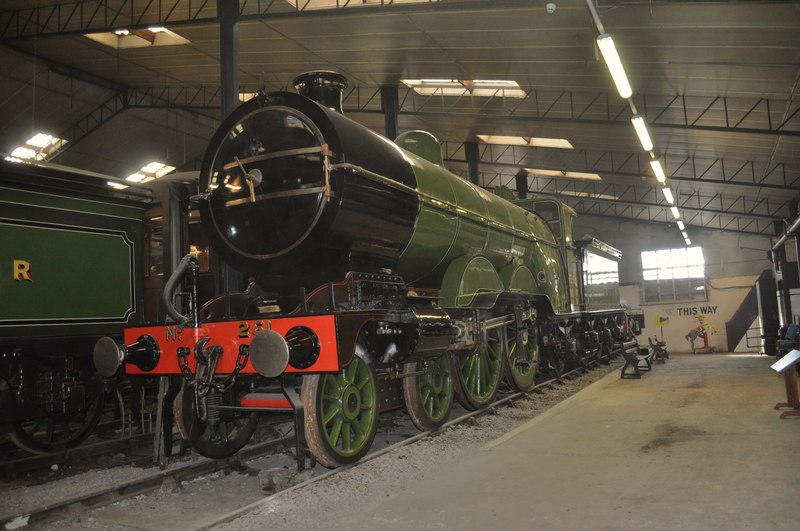|
GNR Class C1 (other) , later LNER Class C12
{{disambig ...
GNR Class C1 may refer to either of the following classes of railway locomotive designed for the Great Northern Railway by Henry Ivatt: * GNR Class C1 (large boiler), 94 locomotives introduced from 1902, later LNER Class C1 * GNR Class C1 (small boiler), 22 locomotives introduced from 1898, later LNER Class C2 See also * GNR Class C2 The Great Northern Railway class C2 locomotives were a class of 4-4-2 tank locomotives built by the Great Northern Railway (GNR) between 1898 and 1907. They were used on local and commuter passenger trains in Yorkshire and North London. They ... [...More Info...] [...Related Items...] OR: [Wikipedia] [Google] [Baidu] |
Great Northern Railway (Great Britain)
The Great Northern Railway (GNR) was a British railway company incorporated in 1846 with the object of building a line from London to York. It quickly saw that seizing control of territory was key to development, and it acquired, or took leases of, many local railways, whether actually built or not. In so doing, it overextended itself financially. Nevertheless, it succeeded in reaching into the coalfields of Nottinghamshire, Derbyshire and Yorkshire, as well as establishing dominance in Lincolnshire and north London. Bringing coal south to London was dominant, but general agricultural business, and short- and long-distance passenger traffic, were important activities too. Its fast passenger express trains captured the public imagination, and its Chief Mechanical Engineer Nigel Gresley became a celebrity. Anglo-Scottish travel on the East Coast Main Line became commercially important; the GNR controlled the line from London to Doncaster and allied itself with the North Easte ... [...More Info...] [...Related Items...] OR: [Wikipedia] [Google] [Baidu] |
Henry Ivatt
Henry Alfred Ivatt (16 September 1851, Wentworth, Cambridgeshire – 25 October 1923) was an English railway engineer, and was the Chief Mechanical Engineer of the Great Northern Railway from 1896 to 1911. Career London and North Western Railway Educated at Liverpool College., at age 17, Ivatt was apprenticed to John Ramsbottom at the Crewe Works of the London and North Western Railway (LNWR). He worked as a fireman for six months and held various positions there. He was made head of the Holyhead Locomotive Depot in 1874, before being promoted to the head of the Chester District. Great Southern and Western Railway In 1877, Ivatt moved to Ireland, and the Great Southern and Western Railway at Inchicore. In 1882, he was appointed to the post of locomotive engineer there, where he patented a design for a sprung flap for vertically-opening carriage windows that became ubiquitous. Great Northern Railway In 1895, Ivatt returned to England and was appointed Locomotive S ... [...More Info...] [...Related Items...] OR: [Wikipedia] [Google] [Baidu] |
GNR Class C1 (large Boiler)
The Great Northern Railway (GNR) Class C1 is a type of 4-4-2 steam locomotive. One, ex GNR 251, later LNER 2800, survives in preservation. Much like their small boiler cousins, they were capable of reaching speeds of up to 90 mph (145 km/h). They were also known as ''Large Atlantics''. Development The C1 Class, as it was known under both GNR & LNER classifications, was designed by Henry Ivatt as an enlarged version of what became the LNER C2 Class. The principle of the design was to produce a powerful, free-steaming engine to haul the fastest and heaviest express trains on the Great Northern. They could thus be seen as the start of the East Coast 'Big Engine' policy. None were ever named. First engine and improvements The first engine, No. 251, was introduced in 1902, with eighty more being built at Doncaster Works between 1904 and 1908. Although they suffered from a number of teething troubles, the Atlantics were generally very successful. They were original ... [...More Info...] [...Related Items...] OR: [Wikipedia] [Google] [Baidu] |
GNR Class C1 (small Boiler)
The Great Northern Railway (GNR) Small Boiler Class C1 is a class of steam locomotive, the first 4-4-2 or Atlantic type in Great Britain. They were designed by Henry Ivatt in 1897. In total 22 were built between 1898 and 1903 at Doncaster Works. The class were commonly known as 'Klondykes' , after the 1897 Klondike gold rush. They could reach speeds of up to 90 mph (145 km/h). They were also known as ''Small Atlantics''. History The 4-4-2 wheel arrangement made its first appearance on a tender engine in 1888 in the United States of America. It was the natural development of the 4-4-0 the additional trailing truck not only supporting a larger firebox but improving the riding. Ten years later the GNR's Henry Ivatt introduced the Atlantic type engines to Britain. Ivatt had the daunting task of replacing the venerable Patrick Stirling at the head of the GNR's locomotive department. Stirling, who had died in office aged 75, was revered not only for the performance of his locomo ... [...More Info...] [...Related Items...] OR: [Wikipedia] [Google] [Baidu] |
